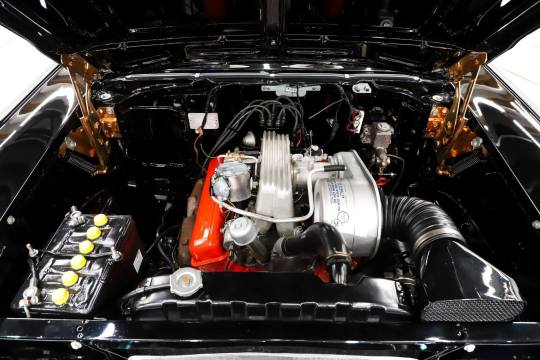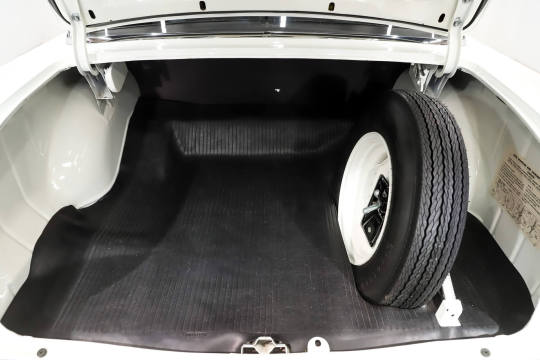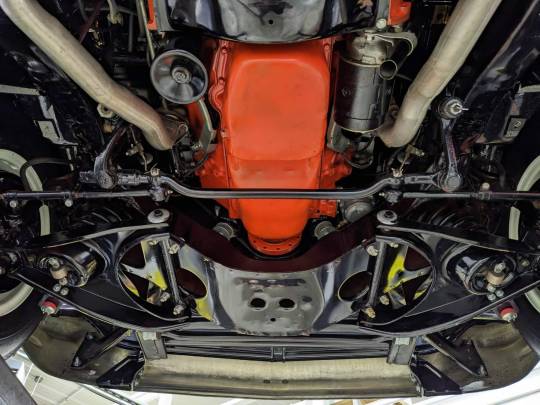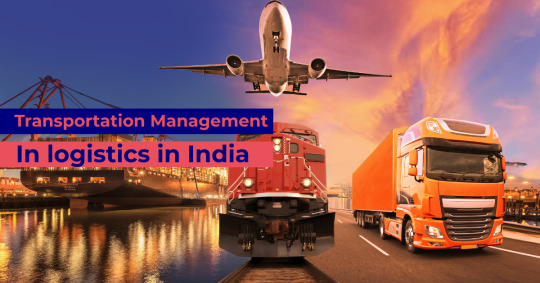#Vehicle Tracking system in India
Explore tagged Tumblr posts
Text
Vehicle Tracking Systems in India
Watsoo Vehicle Tracking Systems assume a significant part in checking truck mishaps. Its highlights like real-time monitoring, data analysis contributes to overall fleet management. Continuous GPS Following, Speed Checking and Cautions, Route Optimization, Driver Behavior Analysis, Maintenance Alerts, Fatigue Monitoring, Emergency Response Assistance.
#vehicle tracking system#vltd#vts#vehicle tracking system in india#vehicle tracking system gurgaon#vehicle tracking system india
0 notes
Text
#lorry loads#freight transportation#trucking logistics#cargo hauling#haulage services#commercial vehicle operations#heavy load delivery#bulk goods shipment#oversize load transport#distribution trucking#logistics india#supply chain management india#freight forwarding india#transportation services india#warehousing india#distribution networks india#import export solutions india#third-party logistics india#cold chain logistics india#online lorry loads services#freight marketplace#truck load boards#digital logistics platform#transport automation#load matching#carrier connectivity#real-time tracking#capacity utilization#transportation management systems#house shifting services online india
0 notes
Text
#lorry loads#freight transportation#trucking logistics#cargo hauling#haulage services#commercial vehicle operations#heavy load delivery#bulk goods shipment#oversize load transport#distribution trucking#logistics india#supply chain management india#freight forwarding india#transportation services india#warehousing india#distribution networks india#import export solutions india#third-party logistics india#cold chain logistics india#online lorry loads services#freight marketplace#truck load boards#digital logistics platform#transport automation#load matching#carrier connectivity#real-time tracking#capacity utilization#transportation management systems#house shifting services online india
0 notes
Text
Enhancing Safety in the Mining Industry: The Role of Advanced Telematics Solutions

The mining industry faces significant challenges in ensuring the safety of its workforce amidst hazardous working conditions and complex operational environments. Despite stringent safety regulations and protocols, accidents and incidents continue to pose risks to personnel and assets. In this context, the adoption of advanced telematics solutions emerges as a critical strategy to enhance safety standards and mitigate risks within mining operations.
In this article, we will discuss the role of telematics technology, its key features, applications, and benefits in the mining industry.
Understanding the Role of Telematics Technology in the Mining Industry
Telematics systems employ a combination of hardware and software components to collect, transmit, and analyse data from vehicles and assets in real-time. The GPS tracking devices installed in vehicles capture location coordinates, speed, and route information, which is transmitted to a centralised platform via cellular or satellite networks. In addition, onboard sensors and diagnostics systems monitor vehicle performance metrics such as engine health, fuel consumption, and maintenance status.
This data is then processed and analysed using advanced algorithms and fleet telematic analytics tools to generate actionable insights and performance reports for fleet managers and stakeholders. By providing visibility into key operational parameters and safety metrics, mining telematics systems enable mining companies to proactively identify risks, implement preventive measures, and optimise resource allocation to enhance safety and efficiency across their operations.
Key Features of Telematics Fleet Management System for Mining Operations
Live Location Tracking: Track the real-time location of vehicles and equipment, enabling better fleet management and resource allocation.
Rash Driving Alerts: Receive alerts for instances of aggressive or unsafe driving behaviour, allowing for immediate intervention and corrective action.
Accident Detection: Detect accidents or collisions as they occur, enabling rapid response and assistance to affected personnel.
Autonomous Emergency Braking (AEB): Automatically apply brakes in emergency situations to prevent or mitigate collisions, enhancing overall safety on the road.
Tailgating Detection: Identify instances of tailgating, a common cause of accidents, and alert drivers to maintain safe following distances.
Overspeeding Monitoring: Monitor vehicle speed in real-time and receive alerts for instances of speeding, helping to prevent accidents and ensure compliance with safety regulations.
Drowsiness Detection: Detects signs of driver drowsiness or fatigue and provides timely alerts to prevent accidents caused by impaired alertness.
Distraction Monitoring: Monitor driver attentiveness and detect distractions such as mobile phone usage or inattentiveness, reducing the risk of accidents due to driver distraction.
Application of Telematics in the Mining Industry
Enhanced Driving Behavior Insights
Gain comprehensive insights into driving behaviour, empowering mining companies to identify and address unsafe practices effectively. By analysing factors such as speed, acceleration, and braking, organisations can develop targeted strategies to promote safer driving habits among their workforce.
Access to Incident Videos
Access to incident videos in real-time facilitates prompt response and investigation of accidents or incidents within mining operations. This capability enhances safety protocols by enabling timely review and analysis, ultimately contributing to the development of more robust risk management strategies.
Fleet Performance Optimization
Utilise data analytics to optimise fleet performance and efficiency in mining operations. By leveraging insights derived from telemetric fleet management systems, organisations can identify areas of inefficiency and implement corrective measures to reduce operational costs and enhance productivity across their fleet.
Benefits of Using Telematics in Mining Operations
Telematics technology finds various benefits in mining operations, contributing to enhanced safety, efficiency, and productivity. Some key benefits include:
Fleet Management: Telematics systems enable real-time vehicle tracking and equipment, allowing managers to monitor their location, speed, and status. This ensures efficient fleet management, optimal asset utilisation, and timely maintenance scheduling.
Remote Monitoring: Telematics enables remote monitoring of equipment performance and health, including engine diagnostics, fuel consumption, and maintenance alerts. This proactive approach helps prevent unexpected breakdowns, reduces downtime, and extends equipment lifespan.
Safety Enhancement: Integration with fatigue monitoring systems helps identify signs of driver fatigue, allowing for timely intervention to prevent accidents caused by drowsiness.
Data-Driven Decision-Making: Historical performance data and trend analysis provide valuable insights for long-term planning and strategic decision-making, driving continuous improvement initiatives.
Scalability: Telematics solutions are scalable and customizable to meet the evolving needs of mining operations, accommodating changes in fleet size, geographic expansion, and technological advancements.
Conclusion
To sum up, investing in mining telematics solutions is important for safeguarding worker wellbeing and enhancing operational efficiency in the mining industry. By leveraging telematics technology, mining companies can proactively identify and mitigate safety risks, optimise fleet performance, and ensure regulatory compliance.
#telematics in mining#telematics#mining telematics#applications of telematics#advantages of telematics#telematics solution providers in india#telematics vehicle tracking#truck fleet telematic#mining vehicle telematics#commercial fleet telematics#telematics software providers#telematics solutions#telematics data#telematics system#fleet telematics analytics#vehicle telematics data#mining telematics solution
0 notes
Text
Navigating Efficiency: GPS Fleet Tracking Software in the UAE
In the dynamic landscape of fleet management, businesses in the UAE are increasingly turning to GPS fleet tracking software as a powerful tool for enhancing operational efficiency, improving safety, and optimizing resource utilization. This technology provides real-time insights into the location and performance of vehicles, enabling businesses to streamline operations, reduce costs, and deliver superior service to their customers. In this blog, we’ll explore the features and benefits of GPS fleet tracking software in the UAE and how it’s revolutionizing the way businesses manage their fleets.
Real-Time Vehicle Tracking: At the core of GPS fleet tracking software lies the ability to monitor the real-time location of vehicles. By leveraging GPS technology, businesses can track the precise whereabouts of their vehicles at any given moment, allowing for better route planning, improved dispatching, and enhanced fleet visibility. Whether it’s monitoring delivery trucks, service vehicles, or rental cars, real-time tracking ensures that businesses can stay informed and responsive to the needs of their customers.
Optimized Route Planning: With GPS fleet tracking software, businesses can optimize their routes to minimize fuel consumption, reduce travel time, and maximize efficiency. By analyzing historical data and real-time traffic information, the software can suggest the most efficient routes for drivers, taking into account factors such as traffic congestion, road closures, and weather conditions. This not only saves time and money but also improves driver productivity and customer satisfaction.
Enhanced Driver Safety: Safety is paramount in fleet management, and GPS tracking software helps businesses promote safer driving practices among their drivers. By monitoring factors such as speed, harsh braking, and sudden acceleration, businesses can identify risky behaviors and provide targeted coaching and training to improve driver safety. Additionally, in the event of an emergency or accident, GPS tracking allows businesses to quickly locate and assist their drivers, ensuring their well-being and minimizing downtime.
Improved Asset Management: GPS fleet tracking software provides businesses with valuable insights into the performance and utilization of their vehicles and assets. By tracking metrics such as mileage, fuel consumption, and engine diagnostics, businesses can identify opportunities for maintenance optimization, asset utilization improvement, and cost reduction. This proactive approach to asset management helps businesses extend the lifespan of their vehicles, minimize downtime, and maximize return on investment.
Compliance and Regulatory Reporting: In a highly regulated industry such as transportation, compliance with government regulations and industry standards is essential. GPS fleet tracking software automates compliance reporting by capturing and storing data related to driver hours, vehicle inspections, and regulatory requirements. This streamlines the reporting process, reduces administrative burden, and ensures that businesses remain compliant with relevant regulations, avoiding costly fines and penalties.
Conclusion: GPS fleet tracking software is revolutionizing fleet management in the UAE, providing businesses with powerful tools to enhance efficiency, improve safety, and optimize resource utilization. By leveraging real-time vehicle tracking, optimized route planning, enhanced driver safety, improved asset management, and streamlined compliance reporting, businesses can gain a competitive edge in their industry while delivering superior service to their customers. As technology continues to evolve, GPS fleet tracking software will play an increasingly vital role in helping businesses navigate the complexities of fleet management and drive success in the UAE and beyond.
#business#GPS fleet Tracking Software uae#Gps vehicle tracking system company in dubai#india#news#School bus tracking software dubai#sustainability#technology
0 notes
Text

1957 Chevy
The Legendary “Black Widow” 1957 Chevy: A Piece of Racing History
When it comes to legendary cars, the 1957 Chevrolet, also known as the “Black Widow,” holds a special place in the hearts of car enthusiasts. However, few people know the intriguing story behind this iconic vehicle. In this article, we will take you on a journey through time and explore the fascinating history of the Black Widow.

The Secret Support Behind the Scenes
In the 1950s, car manufacturers were prohibited from directly promoting racing. Nevertheless, behind closed doors, Chevrolet found a way to support the racing community. They collaborated with a company called SEDCO to build a limited number of race-ready 1957 Chevys. Only 18 of these incredible vehicles were ever produced.

Unleashing the Beast
To create the ultimate racing machine, Chevrolet started with the lightest model available, the no-frills 150 utility sedan. They then equipped these cars with high-performance drivelines that would leave their competitors in awe. The Black Widows proved to be astonishingly fast, setting records and securing multiple victories on the track.

Restoring the Legend
One particular Black Widow has undergone an extensive body-off-frame restoration, meticulously recreating its original glory. The attention to detail is impeccable, resulting in a pristine body that is arguably even better than when it first rolled off the factory floor.
Exquisite Exterior
Painted in the iconic Black Widow colors of Onyx Black and India Ivory, the exterior of this restored beauty is nothing short of breathtaking. Every panel is laser straight, and the gaps are precise. There isn’t a hint of rust or damage to be found. The flawless paint job has been polished to a mirror-like finish, allowing you to see your own reflection. It’s like holding history in your hands.

Interior Simplicity
Inside the Black Widow, you’ll find a minimalist design that emphasizes performance over luxury. There are no frills, not even a back seat! The rear windows are stationary, and amenities such as armrests, visors, and even a dome light are absent. However, this simplicity only adds to the car’s authenticity and racing pedigree.

Attention to Detail
No aspect of the Black Widow’s restoration has been overlooked, including the trunk compartment. Painted in glossy white, it exudes cleanliness and attention to detail. A reproduction mat, seat divider, and weatherstrip have been added to complete the authentic look. Even the spare tire matches the original style with its 6 lug pattern and reproduction Firestone tire.

The Heart of a Champion
Under the hood lies a highly detailed engine compartment that exemplifies show-quality craftsmanship. The 283 cubic-inch V8 engine has been built to its original 283 horsepower specifications, complete with a correct factory fuel injection setup. Not only does it look stunning, but it also performs flawlessly. With a responsive throttle and a distinctive idle, this powerhouse truly embodies the spirit of a race car.

A Masterpiece Underneath
The detailed restoration extends to the underside of the car as well. The chassis has been meticulously prepped and painted in a smooth gloss black finish. Every component has been rebuilt, replaced, restored, and detailed to match the original specifications. The Black Widow features front and rear sway bars, as well as the unique duplication of two shocks at each rear wheel for enhanced performance.

A True Muscle Car
With its completely rebuilt brake system, all-new fuel system, and Flowmaster dual exhaust, this Black Widow not only looks and sounds like a classic muscle car but also performs like one. The spotless Chevy Orange engine block, lower plug wire shielding, canister-type oil filter, restored starter, and dated 1957 transmission all contribute to creating an authentic driving experience. The floors, braces, and rockers have been meticulously restored to their original factory red oxide primer finish.
101 notes
·
View notes
Text
My Fuels: India’s Largest Integrated Fuel and Energy Solutions Platform

In a rapidly growing economy like India, access to reliable, efficient, and scalable energy infrastructure is essential for industrial growth, transportation, logistics, and construction. My Fuels has emerged as a leading solution, offering end-to-end services that simplify energy sourcing, fuel delivery, and equipment rentals.
Nationwide Reach and Growing Presence
With operations in 130+ cities and serviceability across 18,000+ pin codes, My Fuels has built one of the most extensive energy support networks in the country. This broad reach enables the company to serve both urban hubs and remote locations with the same level of consistency and quality.
Comprehensive Service Portfolio
1. Fuel Management and Delivery My Fuels provides doorstep delivery of multiple fuel types with real-time tracking and safety compliance. The platform supports industries that rely on high-volume and timely fuel access for uninterrupted operations.
2. Lubricants, Additives, and AdBlue The company supplies a wide range of performance-optimized lubricants, emission-reducing additives, and certified AdBlue solutions for industrial and commercial vehicle fleets.
3. EV Charging Infrastructure As India accelerates its transition to electric mobility, My Fuels provides integrated EV charging stations and infrastructure support for commercial and residential projects.
4. Genset and Machine Rentals My Fuels offers generator sets and machine rentals for construction sites, events, and emergency operations. These include dual fuel converters and RECD (Retrofit Emission Control Devices) to support both efficiency and environmental compliance.
5. Repairs, Spares, and Emergency Services The company offers 24/7 roadside assistance, certified spare parts, and expert repair services to reduce downtime and ensure operational continuity. Their RSA services span thousands of locations nationwide.
6. Renewable Energy and Battery Solutions In addition to conventional fuels, My Fuels provides hybrid energy solutions including battery backup systems and integrations with solar and clean energy sources.
End-to-End Digital Platform
From discovery to delivery, My Fuels manages the entire customer journey via a centralized digital interface. Businesses can schedule deliveries, monitor usage, request maintenance, and manage energy assets through a single vendor.
Industry Use Cases
Fleet Operators reduce fuel wastage and increase uptime through scheduled refuelling and roadside assistance.
Construction Companies rely on Genset rentals and machine support across dynamic project sites.
Manufacturing Units benefit from bulk fuel delivery and long-term equipment leasing.
EV Developers access turnkey infrastructure planning and implementation.
Conclusion:
My Fuels is not just a fuel supplier — it’s an operational partner that helps businesses manage energy needs efficiently and sustainably. By consolidating multiple services under one platform, My Fuels offers unmatched convenience, cost control, and nationwide reliability.
To learn more or schedule a consultation, visit www.myfuels.in.
#fuel supplier#fuel supplier in india#fuel supplier india#fuel delivery service#on demand fuel delivery
2 notes
·
View notes
Text
A Complete Guide to Electric Car Charger Installation
As more people adopt electric vehicles (EVs), the demand for reliable and accessible charging solutions increases. Installing an EV charger at home provides a convenient way to keep your vehicle fully charged and ready to go. This guide walks you through selecting and installing a portable or wall-mounted EV charger, focusing on the specific requirements in Dubai.

Understanding EV Charging Levels
EV chargers are categorized into three levels:
• Level 1: You connect this charger to a standard 120V household outlet, and it typically adds 3–5 kilometers (2–3 miles) of range per hour. While it’s ideal for overnight charging, it charges slower than the other levels. • Level 2 (DC Fast Charging): This charger provides rapid charging but requires specialized equipment.
Step 1: Assess Your Home’s Electrical System
Before installing an EV charger, assess whether your home's electrical system can handle the increased demand. • Panel Capacity: Confirm that your electrical panel can handle the additional load. If you install a Level 2 charger, you may need to upgrade to a 60–100 amp electrical panel.
• Circuit Availability: Verify if space is available for an additional circuit breaker dedicated to the EV charger. • Wiring and Outlets: Check if the existing wiring can support the charger or if upgrades are necessary.
Step 2: Choose the Right EV Charger
Selecting the appropriate charger is crucial:
Compatibility: Make sure the charger is suitable for your specific EV model and connector type. The majority of EVs use the SAE J1772 connector, although some models may require additional adapters.
Charging Speed: Consider the charger's power output. Higher amperage chargers (e.g., 32A) charge faster but may require panel upgrades.
Smart Features: Some chargers offer Wi-Fi connectivity, allowing you to schedule charging times, monitor energy usage, and integrate with smart home systems.
Portability: Portable chargers are versatile and can be used at different locations, but they may charge slower than wall-mounted units.
Step 3: Obtain Necessary Permits
In India, the installation of an EV charger may require approval from local authorities:
Electrical Inspectorate: A safety inspection might be required to confirm that the installation meets all relevant standards.
Documentation: Prepare documents such as your EV's registration, proof of residence, and electrical panel specifications.
Step 4: Hire a Licensed Electrician
Hire a certified electrician with experience in installing EV chargers:
Assessment: The electrician will evaluate your home's electrical system and determine the necessary upgrades.
Installation: They will install the charger, ensuring all wiring is safely connected and complies with local codes.
Inspection: Once the installation is complete, the electrician will test the system to verify it’s working correctly.
Step 5: Install the EV Charger
The installation process involves:
Location Selection: Choose a location near your parking area, ensuring the charger is within reach of your vehicle's charging port.
Mounting: For wall-mounted chargers, ensure the wall is sturdy and can support the charger's weight.
Weather Protection: If installing outdoors, use weatherproof enclosures to protect the charger from environmental elements.
Connection: Connect the charger to the dedicated circuit, ensuring all connections are secure and insulated.
Step 6: Test the System
After installation:
Power On: Switch on the power supply to the newly installed circuit.
Functionality Check: Test the charger by plugging in your EV and monitoring the charging process.
Safety Verification: Ensure there are no overheating issues, tripped breakers, or error messages.
Step 7: Utilize Smart Features
If your charger has smart capabilities:
Scheduling: Schedule charging during off-peak hours to benefit from reduced electricity rates.
Monitoring: Use the charger's app or interface to track energy consumption and charging history.
Integration: Connect the charger to your home automation system for more convenient and centralized control.
Conclusion
Installing an EV charger at home in Dubai is a feasible and beneficial investment for EV owners. By carefully assessing your home's electrical system, selecting the appropriate charger, obtaining necessary approvals, and hiring a licensed electrician, you can ensure a safe and efficient charging setup. Embracing this technology not only supports your EV usage but also contributes to a sustainable future.
"I’ve been using Starkdriveinnovations' chargers for months, and they never disappoint. Quick charging times, easy installation, and they’re environmentally friendly. A fantastic investment for anyone transitioning to electric vehicles."
#Installing an EV charger#portable ev charger#electric car charger#ev charging stations#electric charging stations#jeep accessories uae#electric vehicle charging station
2 notes
·
View notes
Text
Transportation Management in Logistics in India: The Key to Seamless Deliveries

Transportation management in logistics in India is a critical function that determines the speed, cost, and reliability of supply chains across the country. With rising demand in sectors like e-commerce, retail, and manufacturing, the ability to move goods efficiently is no longer optional—it’s a necessity. As India continues to expand its infrastructure and embrace digital solutions, companies are increasingly focusing on transportation as a strategic asset.
Why Transportation Matters in Indian Logistics
India is a geographically diverse country, which makes transportation a complex but essential part of logistics. From metro cities to rural villages, goods must travel long distances through varying road and rail conditions. Poor transportation management can result in delivery delays, damaged goods, and cost overruns. That’s why businesses are adopting smarter strategies and technologies to manage transport operations more efficiently.
Core Modes of Transportation in Indian Logistics
Roadways
Road transport accounts for a large portion of freight movement in India. Trucks are commonly used for short- and mid-range deliveries, particularly in last-mile logistics. However, roadways often suffer from traffic congestion, toll charges, and maintenance issues that can hinder efficiency.
Railways
Railways offer an economical option for bulk and long-distance transport. The government’s investment in Dedicated Freight Corridors is improving the speed and reliability of this mode. It is particularly useful for industries like coal, steel, and agriculture.
Air Freight
Air cargo is the fastest method of transport and is widely used for high-value or perishable goods. Though it comes with higher costs, the reliability and quick turnaround make it essential for certain business verticals.
Waterways
India’s port network and inland waterways provide cost-effective solutions for transporting heavy cargo over long distances. With initiatives like the Sagarmala Project, the government aims to boost maritime logistics and reduce pressure on road and rail networks.
Technology’s Role in Transportation Management
Modern transportation management in logistics in India is being powered by technology. Companies are turning to digital tools to automate, monitor, and optimize their transportation workflows:
TMS (Transportation Management Systems): Manage freight operations, track deliveries, and optimize costs.
Real-time GPS Tracking: Enhances transparency and allows proactive response to delays or route issues.
AI and Data Analytics: Predicts delays, traffic patterns, and optimizes routes in real time.
Telematics and IoT: Collects data on vehicle health, driver behavior, and cargo conditions.
These innovations are enabling smarter, faster, and safer transportation systems.
Policy Support and Infrastructure Growth
To strengthen logistics capabilities, the Indian government is implementing key reforms and infrastructure projects:
Bharatmala Pariyojana: Expands highways and freight corridors.
Sagarmala Project: Develops ports and improves coastal logistics.
National Logistics Policy: Aims to create a unified, technology-driven logistics ecosystem.
Dedicated Freight Corridors: Increase the efficiency of goods transportation by separating it from passenger traffic.
Together, these initiatives are shaping a more connected and cost-effective logistics landscape.
Challenges in Transportation Management
Despite significant advancements, transportation management in logistics in India still faces a few roadblocks:
Varying infrastructure quality between urban and rural regions
Regulatory complexities and compliance costs
Fuel price volatility affecting operational budgets
Shortage of trained logistics professionals
Overcoming these challenges will be crucial to maintaining momentum and supporting India’s trade ambitions.
Conclusion
As logistics becomes a competitive differentiator in business, transportation management in logistics in India is emerging as a game-changer. With infrastructure investments, technological adoption, and policy support, the future of logistics in India looks promising. Companies that invest in efficient transport solutions today will be better positioned to serve customers tomorrow.
#transportation management in logistics in India#logistics#shipping#transportation#freightforwarding
1 note
·
View note
Text
Choosing the Right Air Freight Forwarder and Ocean Freight Services for Your Business
In today's fast-paced global market, businesses depend on reliable and efficient shipping solutions to move goods across borders. Whether importing raw materials or exporting finished products, selecting the right logistics partner can make a huge difference. Among the most commonly used methods are air freight and ocean freight.

In this blog, we will explore how to choose the right air freight forwarder and understand the benefits of Ocean Freight Services, brought to you by Cargomate Logistics, a trusted name in the shipping and logistics industry.
Understanding Air Freight Forwarding
Air freight forwarding refers to the coordination and shipment of goods via an air carrier. This is the fastest shipping method, best suited for time-sensitive and high-value cargo. An experienced air freight forwarder like Cargomate Logistics handles everything from customs clearance to documentation and timely delivery.
Benefits of Air Freight Forwarding:
Speed: Air freight is ideal when time is of the essence.
Security: Airports have strict security controls, reducing the risk of theft or damage.
Global Reach: Access to almost any part of the world.
Minimal Warehousing: Faster transit times mean fewer storage needs.
When to Use Air Freight:
Urgent deliveries
Perishable goods
Electronics or high-value products
What to Look for in an Air Freight Forwarder
When choosing an air freight forwarder, consider the following:
Experience: A company with a strong track record, like Cargomate Logistics, ensures reliability.
Global Network: Access to international carriers and airports.
Customs Expertise: Assistance with clearance and legal compliance.
Tracking Systems: Real-time updates for transparency.
Customer Support: Responsive and helpful service.
Cargomate Logistics offers all these benefits, helping businesses streamline their air freight operations effortlessly.
Understanding Ocean Freight Services
Ocean freight is the most common form of international shipping, especially for heavy or bulky goods. It involves transporting goods via cargo ships and is more cost-effective than air freight, although it takes longer.
Types of Ocean Freight:
FCL (Full Container Load): Exclusive use of a container.
LCL (Less than Container Load): Share container space with others.
RORO (Roll-on/Roll-off): Vehicles are driven directly onto the ship.
Bulk Shipping: For large quantities of unpackaged goods.
Benefits of Ocean Freight Services:
Cost-Effective: Especially for large volumes.
Capacity: Can handle oversized or heavy goods.
Environmentally Friendly: Lower carbon footprint compared to air freight.
What to Look for in Ocean Freight Services
Selecting a dependable provider for ocean freight is crucial. Here are key factors:
Reputation: Check reviews and client feedback.
Port Network: A wide reach ensures better delivery options.
Customs Handling: Smooth processing at ports.
Insurance Options: To protect against loss or damage.
Transparent Pricing: No hidden fees.
Cargomate Logistics meets all these requirements with comprehensive ocean freight solutions tailored to your business needs.
Why Choose Cargomate Logistics?
Cargomate Logistics is a leading logistics partner in India, offering tailored air and ocean freight services. Here's why clients trust us:
Experienced Team: Years of expertise in both air and ocean freight.
Global Network: Partnerships with leading airlines and shipping lines.
Customer-Centric: 24/7 support and personalized service.
Compliance Assurance: We manage all legal and documentation work.
End-to-End Solutions: From pickup to final delivery, we handle it all.
Final Thoughts
Choosing the right freight method and logistics partner is essential for any business that deals with international shipping. Whether you require the speed of air freight or the cost-efficiency of ocean freight, Cargomate Logistics has you covered. We offer reliable, timely, and affordable shipping solutions tailored to your business needs.
Contact us today to learn more about our Air Freight Forwarder services and comprehensive Ocean Freight Services. Let Cargomate Logistics be your partner in global trade!
1 note
·
View note
Text
What is Mutual Fund?
A mutual fund is a type of investment vehicle that pools money from multiple investors to invest in a diversified portfolio of securities such as stocks, bonds, and other assets. Investments in securities are spread across a wide cross-section of industries and sectors and thus the risk is reduced.
It is managed by a professional fund manager or an asset management company (AMC) who makes investment decisions on behalf of the investors.
Mutual funds offer good investment opportunities to the investors. Like all investments, they also carry certain risks
SEBI formulates policies and regulates the mutual funds to protect the interest of the investors.
OVERVIEW OF MUTUAL FUNDS INDUSTRY IN INDIA
The mutual fund industry in India was set up through a combination of regulatory changes, legislative reforms and the entry of various market players.
Unit Trust of India- UTI was founded in 1964, which is when the mutual fund sector in India first started to take off. To mobilize public funds and invest them in the capital markets, UTI was established as a statutory body under the UTI Act, 1963. The idea of mutual funds was greatly popularized in India because to UTI.
Regulatory Framework-In India, the mutual fund industry's regulatory structure began to take shape in the 1990s. The Securities and Exchange Board of India (SEBI) Act, which established SEBI as the governing body for the Indian securities markets, was passed in 1993. Among other market intermediaries, SEBI was responsible with regulating and supervising mutual funds.
The SEBI (Mutual Funds) Regulations,1996- This regulation established the legal foundation for the establishment, administration, and operation of mutual funds in India. These regulations outlined the standards for investor protection, investment restrictions, disclosure requirements, and eligibility requirements for asset management companies (AMCs).
Introduction of Private Sector Mutual Funds: UTI was the only active mutual fund provider in India prior to 1993. Private sector mutual funds were nevertheless permitted to enter the market as a result of the liberalization of the financial sector and the opening up of the Indian economy. Many domestic and foreign financial organizations launched their own AMCs and entered the mutual fund industry.
Product Line Evolution: The mutual fund sector in India has grown and increased its product selection throughout the years. Mutual funds initially mainly offered income and growth opportunities. To address various investor needs and risk profiles, the industry did, however, offer a wider range of products, such as equity funds, debt funds, balanced funds, and specialist sector funds.
Investor Education and Awareness: Serious efforts have been made to educate and raise investor awareness in order to encourage investor involvement in mutual funds. Industry groups, AMCs, and SEBI have run investor awareness campaigns, distributed instructional materials, and supported systems for resolving investor complaints. Systematic Investment Plans (SIPs) were introduced, and this was a significant factor in luring individual investors
Technological Advancements-The mutual fund sector in India has embraced technological development, making it possible for investors to access and invest in mutual funds through online platforms and mobile applications. Investors can now transact, track their investments, and get mutual fund information more easily thanks to digital platforms.
The mutual fund industry in India has developed into a strong and regulated sector through regulatory changes, market competition, and investor-centric initiatives. The sector keeps expanding, drawing in more investors and providing them with a wide variety of investment possibilities around the nation.
#business#writing#investment#mutual funds#security market#money#sebi registered investment advisor#equity#make money tips#savings#financial#raise funds#funds#profit#return#growth#reading#knowledge#personal finance#income
42 notes
·
View notes
Text
Vehicle Tracking Systems in Delhi
Keeping a tasks business incorporates specific troubles, especially concerning fleet management. Tracking fleet location, vehicle theft and optimising routes, are a part of the huge issues. Fortunately, a Vehicle Tracking System is a response that will help you with beating these hardships. It is an incredible gadget for compelling fleet the chiefs. The system monitors your vehicle's region as well as grants you to smooth out the courses using GPS advancement.
#vehicle tracking systems in india#vehicle tracking systems in gurugram#vehicle tracking systems in delhi
0 notes
Text
#lorry loads#freight transportation#trucking logistics#cargo hauling#haulage services#commercial vehicle operation#heavy load delivery#bulk goods shipment#oversize load transport#distribution trucking#logistics india#supply chain management india#freight forwarding india#transportation services india#warehousing india#distribution networks india#import export solutions india#thirdparty logistics india#cold chain logistics india#online lorry loads services#freight marketplace#truck load boards#digital logistics platform#transport automation#load matching#carrier connectivity#real-time tracking#capacity utilization#transportation management systems
0 notes
Text
#lorry loads#freight transportation#trucking logistics#cargo hauling#haulage services#commercial vehicle operations#heavy load delivery#bulk goods shipment#oversize load transport#distribution trucking#logistics india#supply chain management india#freight forwarding india#transportation services india#warehousing india#distribution networks india#import export solutions india#third-party logistics india#cold chain logistics india#online lorry loads services#freight marketplace#truck load boards#digital logistics platform#transport automation#load matching#carrier connectivity#real-time tracking#capacity utilization#transportation management systems#house shifting services online india
0 notes
Text

Need a reliable, affordable, and convenient ride? Look no further! RideBoom is now available in India, bringing you a seamless transportation experience like never before.
📱 With our user-friendly mobile app, you can easily book a ride with just a few taps on your smartphone. Whether you're heading to work, exploring the city, or meeting friends, RideBoom has got you covered!
✅ Here's why you'll love RideBoom: 1️⃣ Safe and Trusted Drivers: Our drivers undergo thorough background checks and are fully licensed, ensuring your safety and peace of mind. 2️⃣ Affordable Fares: Say goodbye to overpriced rides! RideBoom offers competitive rates that won't break the bank. 3️⃣ Ride Options: Choose from a range of vehicles to suit your needs, from economical options to luxury cars. 4️⃣ Real-Time Tracking: Track your ride in real-time, so you know exactly when your driver will arrive. 5️⃣ Cashless Payments: Enjoy the convenience of cashless transactions through our secure and easy-to-use payment system.
🌟 Download the RideBoom app now and get ready for a smooth and enjoyable journey across India. Experience the future of transportation at your fingertips!
📲 Download the app here: [Insert App Store/Play Store links]
🔁 Help us spread the word! Share this post with your friends and family who could benefit from RideBoom's services. Let's make transportation hassle-free for everyone in India! 🙌
RideBoomIndia #TransportationRevolution #ConvenientRides #DownloadTheApp
18 notes
·
View notes
Text
Bhavantu ERP Software for Ready Mix Concrete Business
Bhavantu Software offers robust ERP Software for Ready Mix Concrete Business across India, specifically crafted to meet the evolving demands of the RMC industry. Our registered office is located in Ahmedabad, Gujarat, India. In a competitive and time-sensitive industry like RMC, managing procurement, batching, logistics, and billing manually can be a challenge. That’s where Bhavantu ERP steps in — a powerful, intuitive, and scalable ERP system tailored for Ready Mix Concrete manufacturers.

Whether you're running a single plant or a chain of facilities across the country, Bhavantu ERP helps unify your business processes, reduce waste, and increase productivity. 💡 Why Choose Bhavantu ERP? - Industry-Specific – Purpose-built for the RMC sector, unlike generic ERPs. - Local Understanding – Deep knowledge of Indian market challenges and compliance. - Scalable Design – Works for small units to multi-location enterprises. - Easy-to-Use – Simple UI designed for plant operators, dispatchers, and administrators. - Responsive Support – Dedicated team for setup, training, and after-sales queries. - Tech-Driven – Frequent feature updates, mobile support, and smart integrations. ⚙️ Key Features of Bhavantu ERP for RMC Plants: - Order Management – Handle bookings and inquiries with ease. - Production & Batching Integration – Direct sync with batching systems for accurate operations. - Dispatch & Vehicle Tracking – GPS-enabled route and truck monitoring. - Inventory & Raw Material Control – Real-time material stock visibility and alerts. - Sales & GST Invoicing – Automated tax-compliant billing and ledgers. - Customer & Project CRM – Manage clients, track communications, and follow-up efficiently. - Reports & Business Analytics – Gain insights into performance, costs, and delivery. - Mobile App Access – Stay connected on the go for real-time updates and approvals. 🏗️ Ideal For: - Ready Mix Concrete (RMC) Plants - Precast Concrete Manufacturers - Concrete Pumping Service Providers - Civil & Infrastructure Contractors - Road & Bridge Construction Companies 📌 FAQs Q1: Is Bhavantu ERP customizable for plant-specific needs? A1: Yes. It’s modular and highly customizable for any plant size or workflow. Q2: Will it work with my current batching plant software? A2: Yes. We provide seamless integration with major batching systems. Q3: Is it GST-compliant? A3: Absolutely. Bhavantu ERP generates GST-ready invoices and reports. Q4: How fast is the implementation process? A4: Most clients go live within 1 to 4 weeks, depending on custom needs. Q5: Does it support mobile access? A5: Yes. Managers and field teams can access dashboards and updates through a mobile app. 📍 Available Across India Bhavantu ERP Software serves Ready Mix Concrete business throughout India, including: Andhra Pradesh, Assam, Bihar, Chhattisgarh, Delhi, Gujarat, Haryana, Himachal Pradesh, Jharkhand, Karnataka, Kerala, Madhya Pradesh, Maharashtra, Odisha, Punjab, Rajasthan, Tamil Nadu, Telangana, Uttar Pradesh, Uttarakhand, West Bengal, and more. 📞 Contact Us Ready to transform your RMC operations? Book a free demo today and discover how Bhavantu ERP can streamline your concrete business. 👉 For more details, visit our Ready Mix Concrete ERP Software. Contact no: 9099825657 Email: [email protected] Read the full article
#AndhraPradesh#Assam#BestERPforRMCBusinessinIndia#BhavantuSoftware#Bihar#Chhattisgarh#CloudERPforRMCPlants#ConcreteBusinessERP#CustomERPforConcreteBusiness#Delhi#ERPforConstructionIndustry#ERPforReadyMixConcreteBusiness#ERPforRMCIndustry#ERPSoftwareforConcretePlants#FleetManagementERP#GSTCompliantERPforRMC#Gujarat#Haryana#HimachalPradesh#India#InventoryManagementforRMC#Jharkhand#Karnataka#Kerala#MadhyaPradesh#Maharashtra#Odisha#ProductionManagementSoftwareRMC#Punjab#Rajasthan
1 note
·
View note